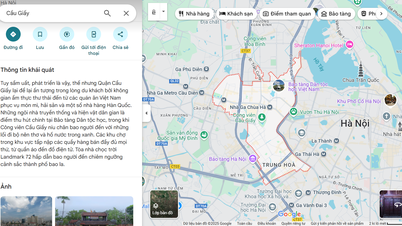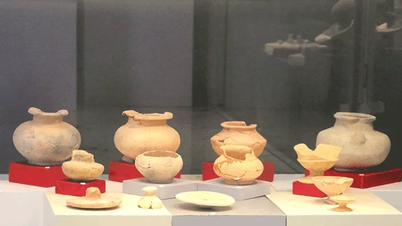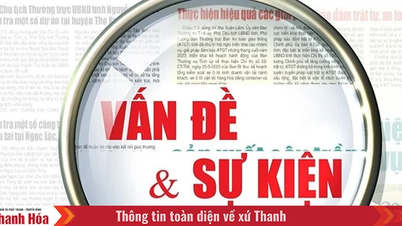According to the above, writing "distinctive buds" is a misspelling. However, in reality, it is not.
Dozens of dictionaries we have on hand record both the spellings “honey bud” and “nat bud”:
- Vietnamese Dictionary (Hoang Phe editor- Vietlex) entry “nuot chung”, notes that this is the “old or dialect” way of writing, and gives instructions on how to read “nuot chung”. Thus, the dictionary compiler still records “unique” but aims for the more common way of writing “unique”.
- Vietnamese dictionary (Association for Enlightenment and Progress - 1931) collected "nuoc trait", with the meaning "Swallow something without chewing", and used the example "Put a pill in the mouth and swallow it whole". This book does not put "upright, not entangled", and uses the example "Upright, not entangled", and uses the example "Upright, not entangled".
- Vietnamese dictionary (Le Van Duc - 1970) does not record “chưng” and “nuột mật”. In the “chưng” section, this book explains it as “Trong, nhon, cua mot lai”, and gives the example “The dog swallowed a piece of meat; the job was not finished but he swallowed a thousand silver coins!”. In the “nuột trung” section, it explains it as “Nuột trong”, and notes it as “Nuột mới và Ngự lưu”.
- Vietnamese orthography dictionary (Le Ngoc Tru - 1967) only records the word "nuột trung", not "nuột mật".
- The Vietnamese General Dictionary (Dao Van Tap - 1951) only records the word "swallow".
- The new Vietnamese dictionary (Thanh Nghi - 1951) also only records the word "swallow".
- Annamite - French Dictionary (LM.
Génibrel - 1898), also only recorded the word "swallow".
Notably, many books collect the word “nuoc luong” with the same meaning as “nuoc troi”, “nau trait”. For example, the Vietnamese Dictionary (Hoang Phe - Vietlex) explains “nuoc clear” as “nuoc troi” and gives the example “the boy swallowed the whole piece of cake”. The Vietnamese Dictionary (Hoi Khai Tri Tien Duc) also records “nuoc trang” and explains it as “The same meaning as swallowing school”.
Many ancient dictionaries only record "nuột trong" and not "nuột trung", such as: Dai Nam Quoc Am Tu Vi (Huynh Tinh Paulus Của - 1885, 1896); Annam - Latin Dictionary (GM.
Taberd - 1883); French - Anamite Dictionary (Truong Vinh Ky - 1884).
Notably, Dai Nam Quoc Am Tu Vi explains “in” as “Large, quite large and intact”; “in ing” = “Medium large, not small”; “in tron = Large but intact. Smooth rice grain”; “in hon = big grain”; “in person = Big kid, not small”; “I com ing” = “Eat whole rice grain; eat by yourself without having to chew. (Children)”; “Nuot in = “Swallow something large without chewing first”.
Thus, based on the appearance of words in dictionaries from the past to the present, "in" (swallow in) is the earliest, followed by "trung" (swallow truong) and the latest is "chung" (swallow whole).
So, etymologically speaking, where does ing↔trinh↔chung come from?
The answer is "in" which comes from the word "in" 重.
The character 重 (another pronunciation is “trung” in the word “trung lap”) has a meaning of “large” (the 22nd meaning that the Chinese dictionary has explained). “Nuot in” means to swallow a large piece, leaving it intact without chewing. In hot = large seed, just like people often say to choose the “in”, that is, to choose the largest one among the things that are chopped or cut into small pieces.
The relationship between ONG↔ONG (in ↔ in) we see in many other cases such as letting loose ↔ letting loose; wandering ↔ wandering,...
From the word “nuột trongg”, it becomes “nuột trung” ( Thanh Hoa dialect pronounces it as “tráng” or “trưng”). The relationship ÔNG↔UNG, we still encounter in Thanh Hoa dialect such as di đồng↔di dung; đến cùng↔ đến công. As for the relationship TR↔CH, we can also cite many examples, such as tea↔che; trường↔chương,...
Thus, “nuot trang” and “nuot trung” are the earliest recorded ways of speaking and writing, followed by “nuot chung”. Currently, the way of speaking and writing "naked" is considered common, but that does not mean that the way of writing "naked" is incorrect. structured, “nuot dich” and “nguot trait” must be classified as “dual possibility” (both ways of writing are acceptable).
Hoang Trinh Son (Contributor)
Source: https://baothanhhoa.vn/nuot-chung-nbsp-va-nuot-trung-254254.htm






































































































Comment (0)